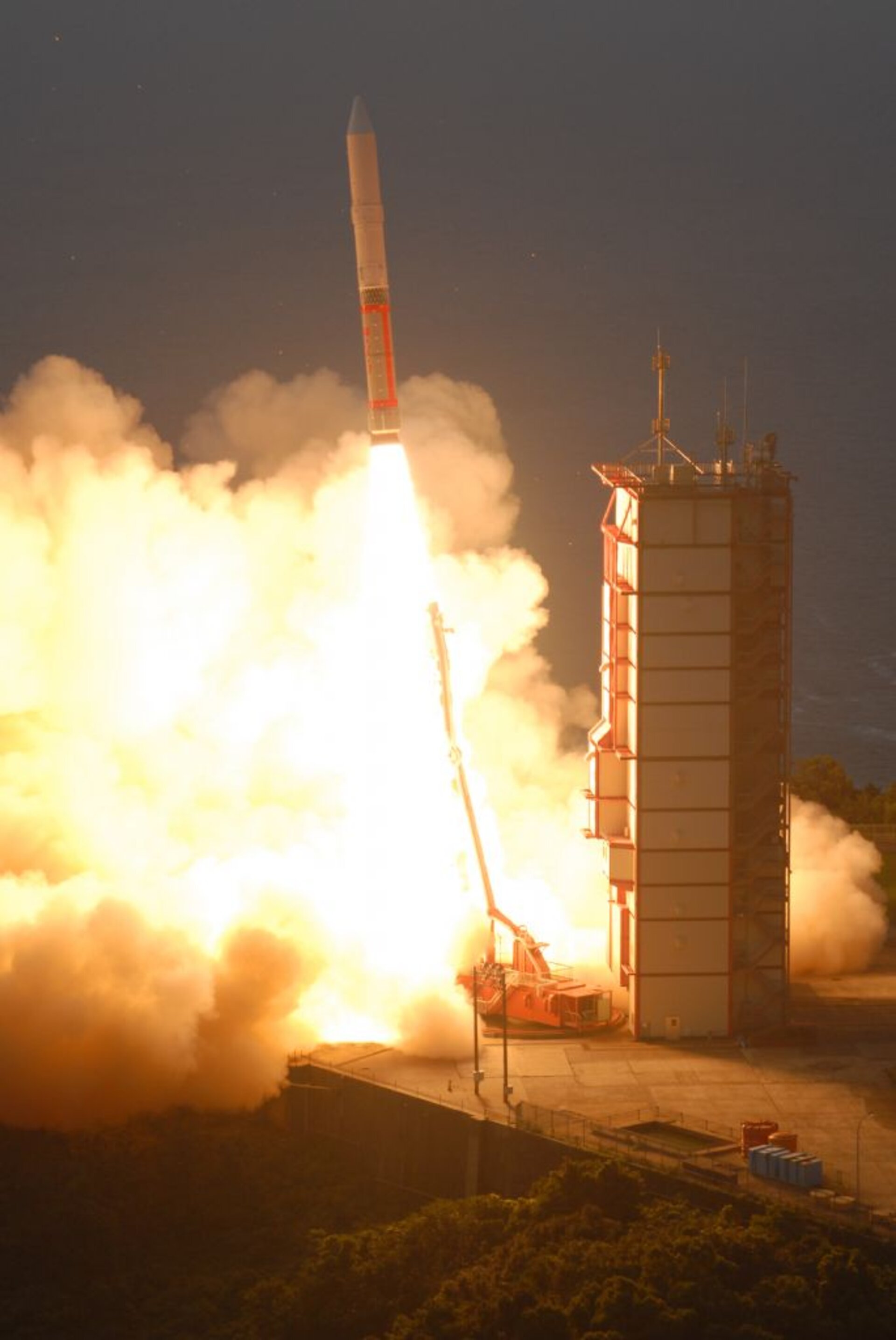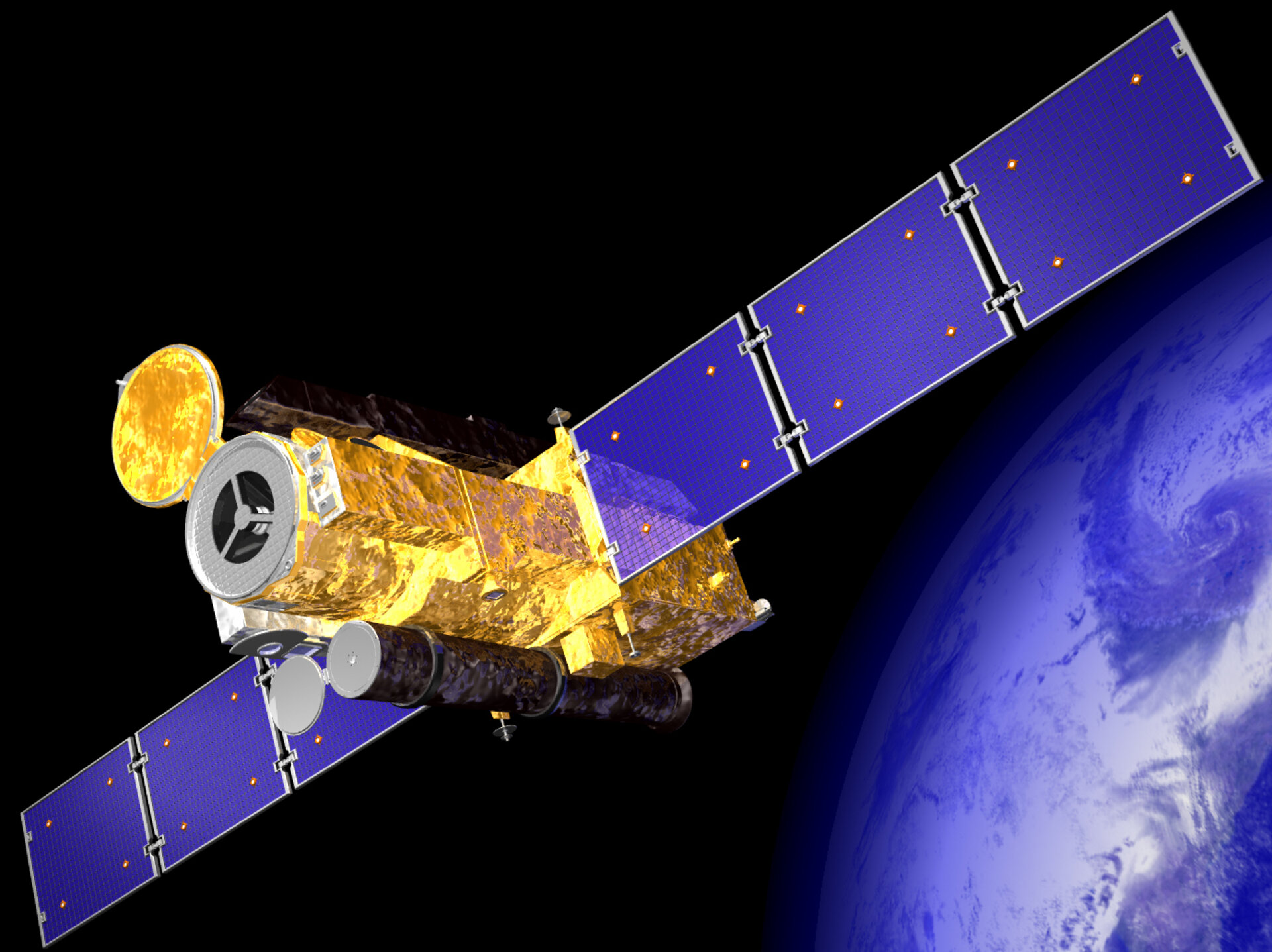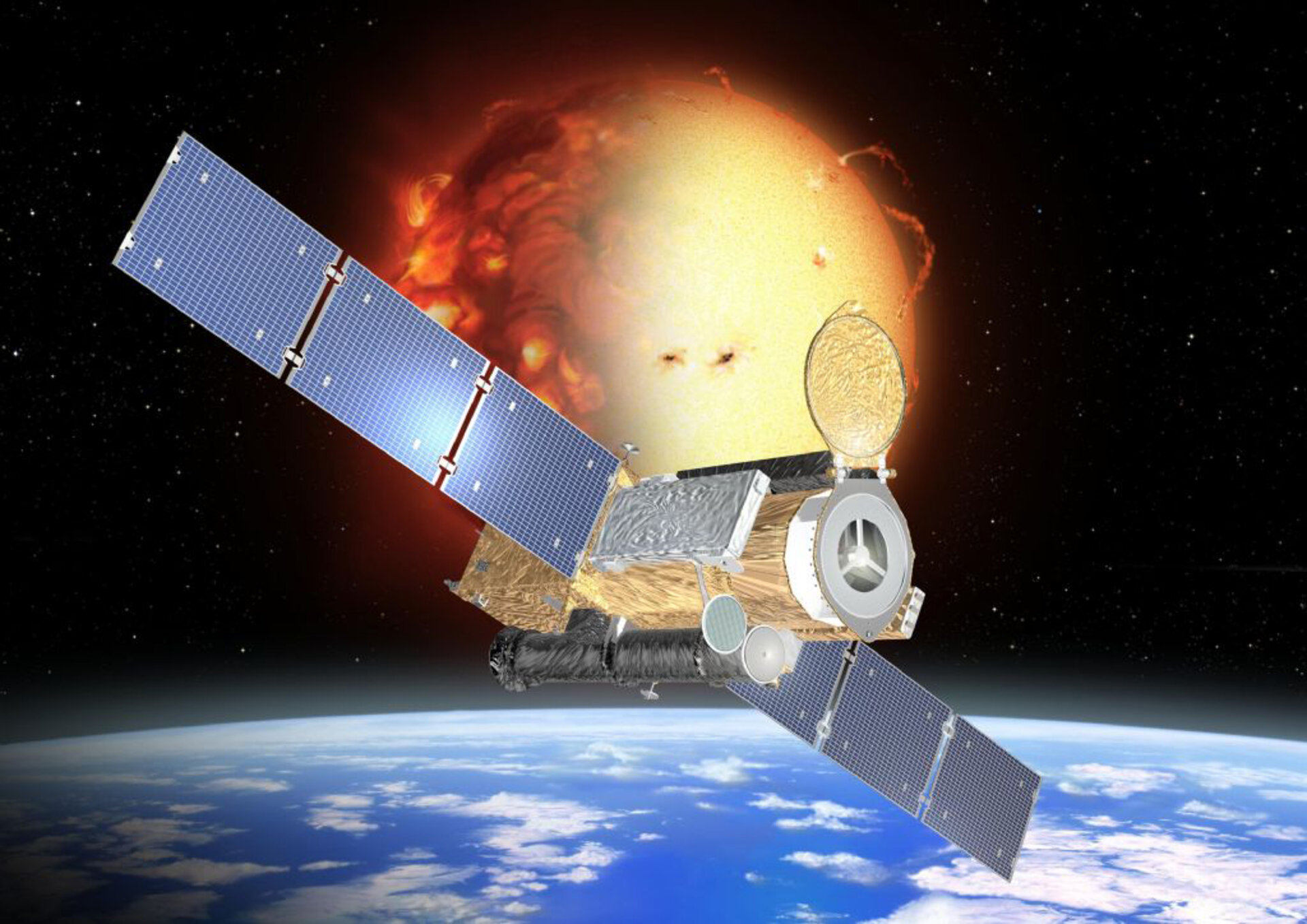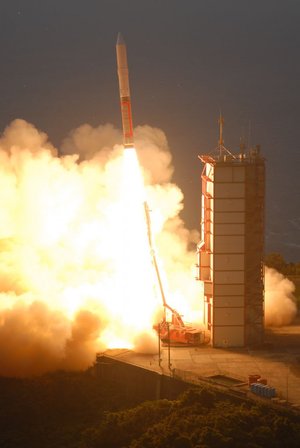Hinode (Solar-B) overview
Objective
Exploring the Sun's magnetic field and outer atmosphere, to better understand the mechanisms that power the solar corona and trigger violent solar eruptions.
Mission

Launched on 22 September 2006, Hinode (Solar-B) is a Japanese-led mission with ESA participation to study the mechanisms which power the solar atmosphere and look for the causes of violent solar eruptions.
It carries a suite of three science instruments – an optical telescope, an X-ray telescope and an extreme-ultraviolet imaging spectrometer.
Together they are studying the generation, transport, and dissipation of magnetic energy from the photosphere to the corona and are recording how energy stored in the Sun's magnetic field is released as the field rises into the Sun’s outer atmosphere.
When the Sun's magnetic field lines interact with each other, huge amounts of energy are suddenly released in the form of so-called solar flares. Connected to this is the phenomenon of coronal mass ejections which hurl huge clouds of plasma into space at speeds of up to 7 million kilometres per hour. The energy and radiation from solar flares and coronal mass ejections can damage sensitive electronics on spacecraft, create power blackouts on Earth, harm astronauts in space, and cause colourful aurorae.
By studying the Sun's magnetic field, Hinode will make significant contributions to our understanding of the complex interaction between the Sun and the space environment around Earth.
What’s special?

Hinode carries the first large space-borne optical telescope dedicated to observing the Sun. Together with the two other instruments, it will allow scientists to study the solar magnetic field at scales smaller than ever before.
This is fundamental for understanding what triggers explosive events on the Sun. In particular, scientists want to learn if they can identify the magnetic field configurations that lead to explosive energy releases and use this information to predict when these events may occur.
Spacecraft
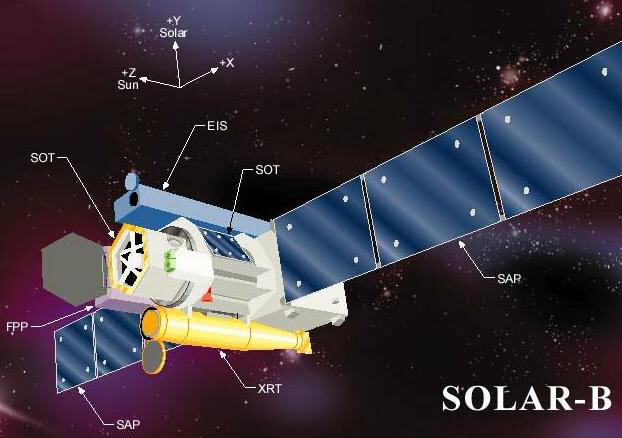
The Hinode spacecraft weighs 900 kilograms, and its solar arrays span about 10 metres.
It carries three complementary scientific instruments to study the Sun in different wavelengths:
A Solar Optical Telescope (SOT), the first large optical telescope flown in space dedicated to observing the Sun. It features a 50-cm mirror and has an angular resolution of up to 0.25". This means that it can photograph details down to a resolution of 175 kilometres on the Sun’s surface. It covers a wavelength range of 480-650 nanometres, that is a large fraction of the visible solar spectrum.
An X-ray Telescope (XRT), to provide images of the solar corona at different temperatures. It is able to provide both full disk and partial fields of view. The temperature range it can observe will be from 1 to 30 million degrees Kelvin.
- An Extreme-ultraviolet Imaging Spectrometer (EIS), a telescope to measure how fast gases travel in the solar atmosphere. It can measure the flows of hot gas down to a level of 1 kilometre per second. EIS is made of very light material – the same type of carbon fibre structure used to build racing cars.
Journey

After launch on 23 September 2006, Hinode was placed in a 96-minute polar orbit around Earth at an altitude of 600 kilometres.
The orbit is synchronised with respect to the Earth's revolution around the Sun which is allowing the spacecraft to be in continuous sunlight for at least 9 months a year during the planned mission duration of three years.
History
Hinode is a follow-up of the successful Japanese YOHKOH (Solar-A) mission, which was launched in August 1991 in an international effort involving Japan, the United States and the United Kingdom. Its X-ray images of the Sun helped redrawing the general perception of our daylight star.
Like YOKOH, Hinode started out as a Japanese/American/British mission. In order to enhance the scientific outcome of the Hinode mission, ESA joined the Hinode team in 2005 in the form of a coordinated endeavour with Norway.
Partnerships
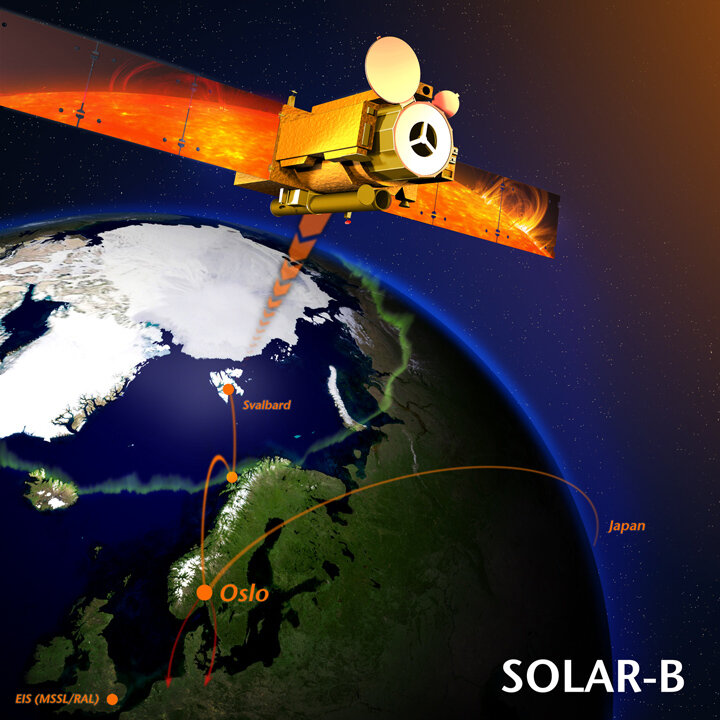
Hinode is led by the Japan Aerospace Exploration Agency (JAXA), and involves institutes in the United States (coordinated by NASA), and in the United Kingdom (coordinated by PPARC).
JAXA's Institute of Space and Astronautical Science (ISAS), is responsible for building the satellite and the optical telescope and also covers launch and operations.
The other two science instruments were assembled under Japanese supervision by the international partners in the United States (for the XRT X-ray telescope) and the United Kingdom (for the EIS ultraviolet imaging spectrometer).
In partnership with the Norwegian Space Centre in Oslo, ESA is providing ground station coverage through the Svalbard Satellite Station, situated on the Norwegian Svalbard islands. This is the only ground station in the world that can receive the satellite data for each of Hinode's 15 daily orbits.
As a result of the ESA/Norway participation in Hinode, scientists from ESA's member states will be given access to the satellite's data. These will be accessible via the European Solar-B Data Centre, which is being built at the Institute of Theoretical Astrophysics at the University of Oslo.


